The competition for the title of 2007 Photo of the Year was stiff to say the least. After last year's extremely quick and unanimous decision, this year there was much more of a good-natured squabble. Those of you who regularly peruse our photo gallery will not need reminding of the high standards that we have become accustomed to.
There was a long deliberation over the selection of photos, but our judges (Julian Hughes, Paul Hackett and Mike Atkinson) finally reached consensus in their choice of the winner of the second BirdGuides Photo of the Year competition, who will be treated to a day of one-to-one training with Paul Hackett, the renowned digiscoper, courtesy of Zeiss. Paul will cover a variety of techniques as well as image-processing, and a scrumptious lunch will be provided. BirdGuides will be adding an iPod nano loaded with both iDentify video and audio.
Winner of BirdGuides Photo of the Year 2007
Stone Curlews taken by Peter Simpson on 19th July
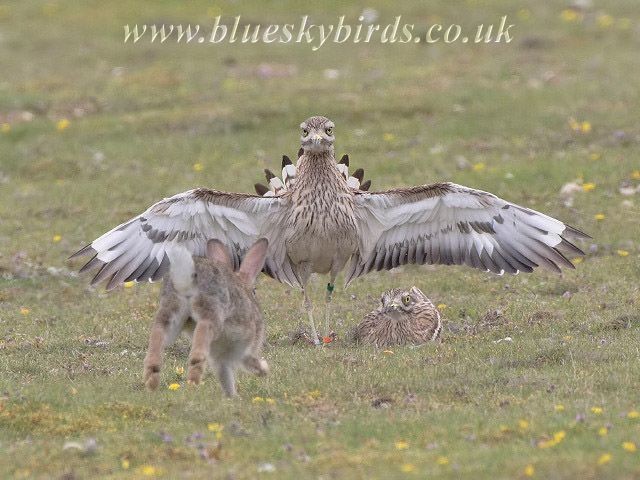
Stone Curlew, Weeting Heath NWT, Norfolk (Photo:
Peter Simpson)
All three judges marvelled at this shot. Comments included:
MA: "Peter's action shot of a displaying Stone Curlew sums up both an event in time and the concept of protectiveness. Birds that nest on open ground have limited options for protection. This image illustrates the extremes, from squatting down and relying on camouflage to looking as big and threatening as possible: in this case, ten times bigger! As well as capturing the rabbit in mid-air, the timing of this shot perfectly places the three subjects (triangularly) for maximum impact, with the protector centrally between the threat and the threatened. With great story-telling and interest value for both birders and photographers, Peter's image has it all."
JH: "Anyone who has spent hours watching a Stone Curlew do little more than blink in the heat haze will enjoy this photo. Great pictures tell a story, and here's an insight into the everyday life of a breeding pair. Grazing, particularly by rabbits, plays an important role in the recovery of Stone Curlews in the Brecks, along with the efforts of dedicated farmers, volunteers and conservation staff. Peter can only have had a moment to capture this, with the Stone Curlew's wings spread to defend its mate from the oncoming rabbit that he has caught in mid-leap."
PH: "For me this picture captures the essence and reality of nature - a moment in time. It has it all."
Peter admits that amazing luck played its part in getting this stunning shot.
"On the day I took the shot I decided to pop to Weeting to see and try and photograph the Stone Curlews. I go there every week or so in the summer. I got to Weeting just after midday and headed to one of the hides, set up my camera gear and then got lunch out for my kids. I was distracted by movement relatively close to the hide: amazingly it was two Stone Curlews. I started to take shots of them as they displayed. Given the time of year, they must have been a failed breeding pair. After displaying for around 10 minutes they settled down and did nothing for some time. I noticed a rabbit running in their direction so focused on them and waited hoping there would be some interaction. I was thrilled to see the defensive behaviour (as I'd not seen it before); I was even more pleased that the rabbit was close enough to be in shot with the birds!"
Equipment
- Camera - Digital SLR. Canon EOS400D.
- Lens - Sigma 500 f4.5 lens and a Kenko 1.4x Teleconverter.
- Gitzo 1349 tripod.
- Jobu gimbal head.
Settings
- Apeture Priority - f6.3.
- ISO 400.
- Shutter speed 1/500th.
Runners-up
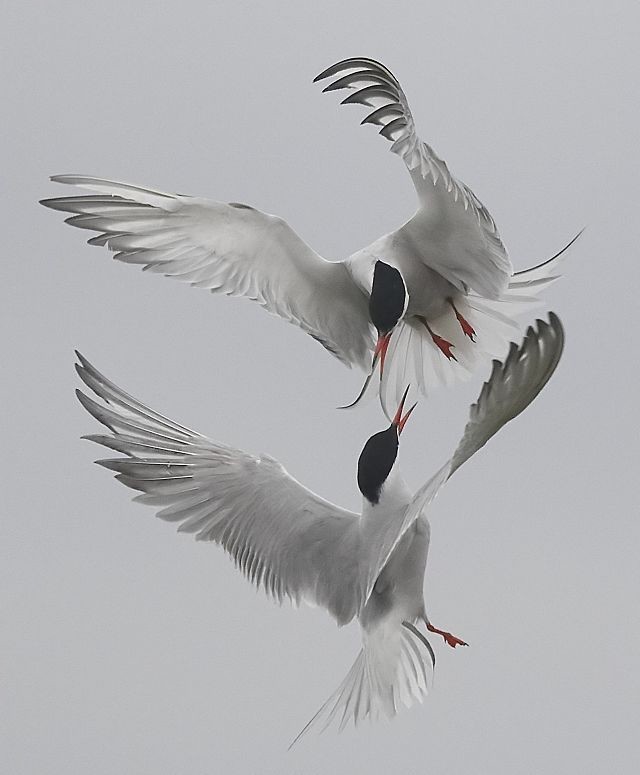
Common Terns, Summer Leys LNR, Northamptonshire (Photo:
Richard Bedford)
MA: "With his exquisite capture of aerial interaction between Common Terns, Richard has frozen a perfect moment in time. The eye contact, the almost-touching bills and the mirrored positions of the bodies and wings make for a dramatic fine art image, made all the more graphic by the near-monochrome palette."

Little Egret and Knot, Snettisham RSPB, Norfolk (Photo:
Stuart Elsom)
JH: "Nature is alive with patterns, and the contrast of the bright egret with the subtle greys of wintering Knots makes this stand out. And is it a climate change parable: a coloniser from the south moving among a species whose habitats are at risk from rising sea levels?"

Coot, Summer Leys LNR, Northamptonshire (Photo:
Kenneth Plows)
PH: "Action shots always excite me, and this picture of what is a common and familiar bird frozen in time and motion is beautifully executed."
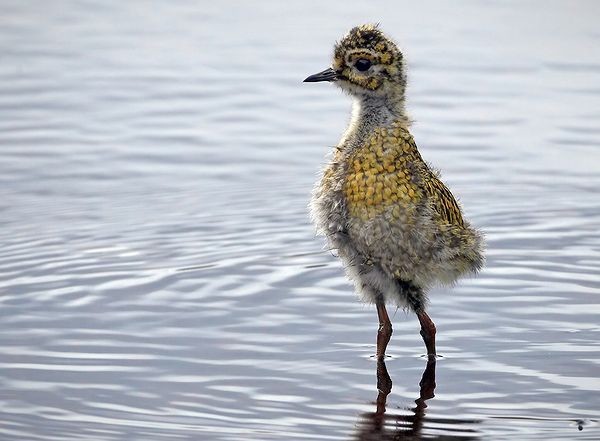
Golden Plover, White Holme Reservoir, West Yorkshire (Photo:
Sean Gray)
MA: "Apart from its obvious cuteness, Sean's image of a young Golden Plover is aesthetically stunning, with a bold composition making the bird stand out three-dimensionally against a perfect background. As a birder, it's also interesting to see this species in transition to the beautiful golden colour of the mature plumage."
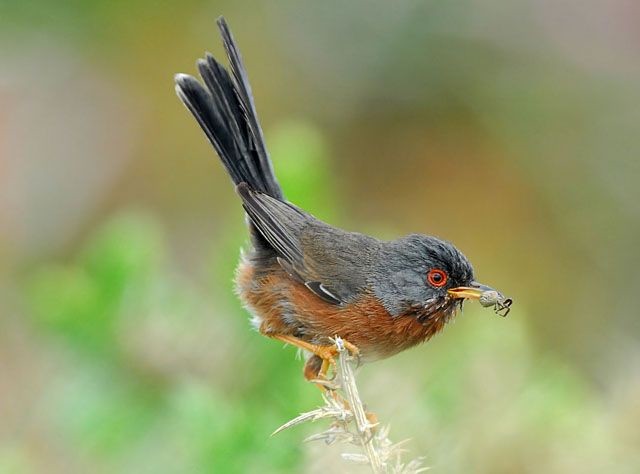
Dartford Warbler, Pleinmont, Guernsey (Photo:
Kev Joynes)
JH: "Seeing a Dartford Warbler always makes a visit to a heathland special, but they're always flitting so quickly that getting a pin-sharp photo in good light can't be easy. This picture is full of warmth - a cracking portrait."
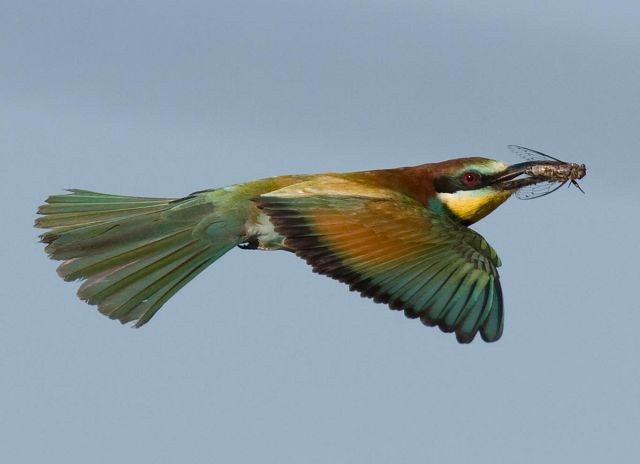
European Bee-eater, Italy (Photo:
Paolo Caretta)
PH: "Pin-sharp, and a wonderful capture of a great bird in flight. Pose, the insect and colours say it all."
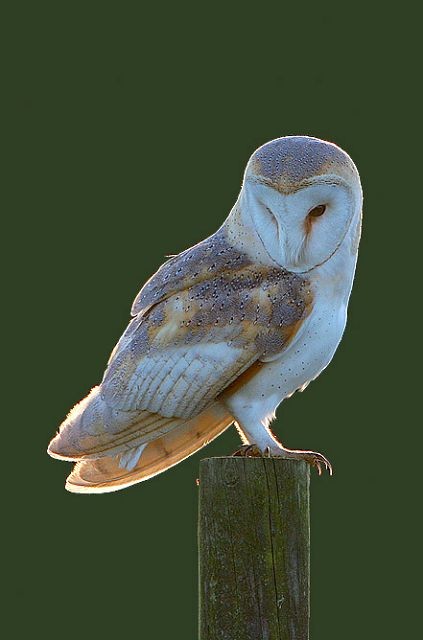
Barn Owl, undisclosed site, Norfolk (Photo:
Nigel Pye)
MA: "With his perfectly composed portrait of a Barn Owl, Nigel shows how shooting towards the sun can yield wonderfully atmospheric shots. The warm 'rim lighting' round the bird - transmitted right through the wing - isolates it beautifully from the uniform green background."

Common Buzzard, Gigrin Farm, Powys (Photo:
Gordon Speirs)
JH: "Water can make a standard picture a bit special, and the rain washing across this Buzzard does just that. The browns and yellows of the background and foreground work perfectly with the plumage of a species that has made a welcome recovery across the UK in the last decade."

Great White Egret, Spain (Photo:
Steve Fletcher)
PH: "White birds are notoriously difficult to expose correctly. Steve has done an outstanding job with this stunning egret."
Finally a big thank you to everyone who submitted pictures to BirdGuides during 2007, and congratulations to all of those who made picture of the week and the weekly reviews. We love looking at all the photos that arrive; do keep them coming.
The Judges
Paul Hackett
Paul Hackett, one of the UK's leading bird digiscopers, has been at the forefront of the digiscoping revolution since 1998, and has pioneered many of the techniques and best practice used to great success today. As well as having his work widely published in all the leading birding journals such as Birdwatching, Birdwatch, Dutch Birding, Birding World and British Birds to name just a few, Paul's bird images and footage have been used by both regional and national news services. Perhaps Paul's most famous image was his portrait of the pair of Bee-eaters that bred in County Durham in 2002 that made it onto the front cover of the Daily Telegraph.
A regular at the Rutland Bird Fair, Paul has held digiscoping lectures and field demonstrations in the UK, Spain and the USA. Paul organised and led the world's first known digiscoping holiday that was held in Extremadura (Spain) in 2005.
Julian Hughes
Julian Hughes is Head of Species Conservation at the RSPB. Hailing from Wales, but living in the flatlands of East Anglia for the last 18 years, Julian has been a keen birder since the age of 16. Although a decent rarity will still occasionally deprive him of sleep, leading to excessive caffeine consumption, much of his birding is now done in Cambridgeshire, particularly his local patch at Paxton Pits. Based in Sandy, he looks after the RSPB's species recovery work for birds such as Black Grouse and Hen Harrier, reintroduction programmes for Red Kite, White-tailed Eagle and Crane, and campaigns to ban the import of wild birds into Europe.
Julian commented "I'm a very amateur photographer, but a look at the BirdGuides photos each week shows what can be achieved by birders in the field. I'm looking forward to seeing the final selection, but I know that choosing just one is going to be a tough, tough call."
Mike Atkinson
Mike's twin passions for birds and photography have been with him since his teen years. With the advent of digital photography, he has finally managed to combine these passions to create a rich collection of images covering over 150 British species, almost 800 of which are featured on his website. His images have appeared in a wide range of publications, both in print and in electronic media such as BirdGuides' DVD-ROM Guide to British Birds. Since suggesting the initiation of the Photo of the Year contest in 2006, Mike has acted as Photographic Adviser to BirdGuides, encouraging the development of bird photography through the Reviews of the Week and other activities. Having learnt the art and craft of bird photography the hard way, Mike is now keen to pass this on to others, both through his training workshops and his popular series of tutorials published on birdguides.com.
Peter Simpson: http://www.blueskybirds.co.uk/
Richard Bedford: http://www.richardbedford.co.uk/
Stuart Elsom: http://www.stuartelsom.co.uk/
Kenneth Plows: http://www.kenswildlifepics.co.uk/
Sean Gray: http://www.grayimages.co.uk/
Steve Fletcher: http://www.stevefletcherphotography.com/
 | BirdGuides would like to thank Zeiss Sports Optics for their kind donation of prizes for this competition. |

